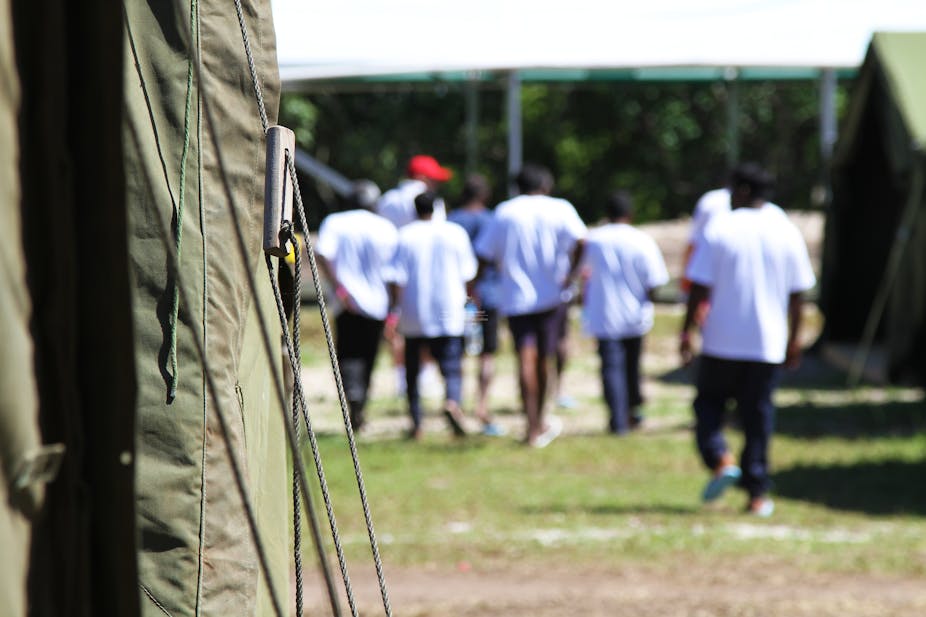Not many people get to see what goes on behind the barbed wired fences of immigration detention centres. Marianne Evers was one of the few who decided to speak out about her work in Nauru. Unsurprisingly her description of the detention centre situated there as a “concentration camp” led to rapid rebuke from a spokesperson from the Immigration department, who called the language “a disgrace”.
Since the reopening of detention centres at Nauru and Manus Island last year, increasing amount of attention is being placed on Australia’s immigration detention regime. Quite rightly questions should be asked about the conditions for men, women and children who are now likely to be in detention for the foreseeable future.
Immigration detention is being paid for by the Australian taxpayer, with funds now being allocated from the aid budget due to a shortfall. A greater cost is being paid by asylum seekers while they wait in limbo.
Shifting the debate from detention conditions to the appropriateness of Evers’ comments, as the Department of Immigration has tried to do, is a mere distraction from the real issues at hand.
How Evers chooses to explain her experiences of immigration detention is up to her and I don’t want to weigh in on the debate about how best to convey the situation on places like Nauru.
But I too have been inside the heavily guarded walls of an immigration detention centre. In the 1990s as a university student I visited Villawood detention centre weekly. I would talk to people in distress, bring in books or newspapers and help people who wanted to learn English. Often we would share news of people who had been released on protection visas. Sadder news came from those who had been deported, who would call to tell us whether they had made it back safely.
The worst time to visit immigration detention was when someone had their visa application rejected. Most people would refuse to come out of their rooms. You could sense the sadness in the air and at these times we struggled to find words of comfort for people awaiting their own decisions. Taking the train out to Villawood in suburban Sydney was never an easy trip.
Since its introduction in 1992, immigration detention has grown into a commercial arrangement costing hundreds of millions of dollars. From a modest number of facilities, run by the Department of Immigration, there are now 19 immigration detention centres, alternative places of detention and transit centres in Australia as well as centres on Manus Island and Nauru. Centres are managed by private security companies and health care staff are contracted by International Health and Medical Services, another private provider. Commercial-in-confidence arrangements restrict personnel from speaking out.
Immigration detention has been condemned for its inhumane treatment, disproportionate cost, mental health consequences and ineffectiveness as a deterrent.
If the conditions at Nauru are so bad that experienced health professionals such as Evers are forced to breach confidentiality agreements and speak out, we should be listening. As for her comments likening immigration detention to a concentration camp, this is not the first time someone has been compelled to compare the two contexts.
During the trial of Ali al Jenabi for people smuggling, comparisons were also made between al Jenbai’s actions and those of Oscar Schindler, who worked to ferry Jews away from concentration camps in World War II.
But this debate should be about much more than language. There are more important questions to be asked. We should be asking about what occurs in immigration detention, however remote and far away it may seem, instead of arguing about whether concentration camp analogies are apt.
Whether we’re motivated by the cost, the adverse mental health consequences, human rights issues or the plight of people facing indefinite detention, there are many ways to approach the issue. Let’s have a discussion about that instead.

